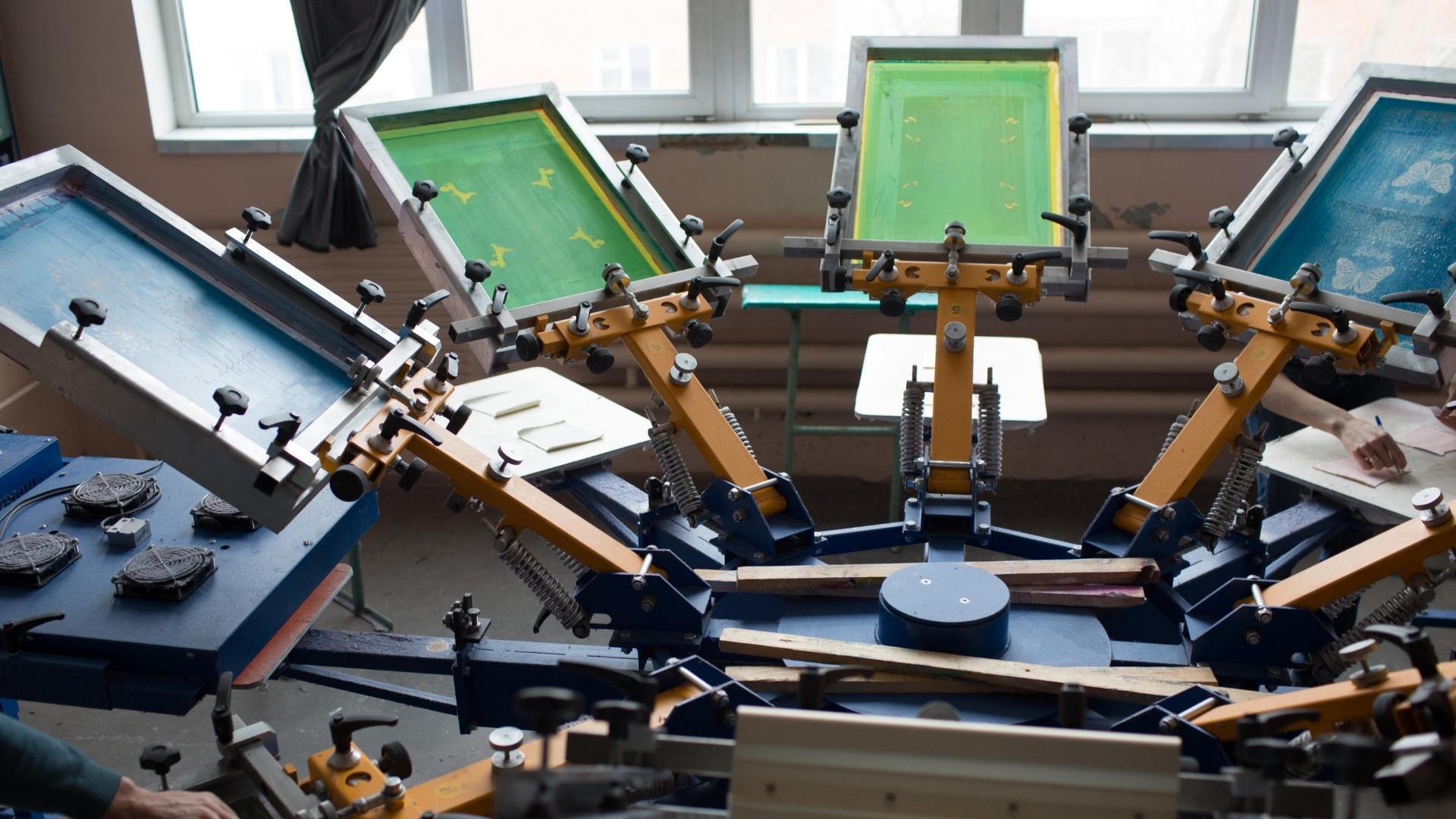The Vital Guide to Comprehending Screen Printing and Its Versatile Utilizes
Screen printing has a rich background that dates back to old times, progressing into a sophisticated technique utilized throughout different markets today. This guide explores the ins and outs of the screen printing process, describing its applications in home, advertising, and style style - 10:9 Design Texas. Comprehending these principles can open up innovative potential for both commercial and imaginative projects. The complying with sections will certainly expose vital tips and strategies to improve one's screen printing endeavors
The History of Screen Printing
Although screen printing has roots that map back centuries, its evolution mirrors the creative and technological developments of various societies. Originating in ancient China, the technique was initially used for enhancing textiles and later infect Japan, where it came to be important to Ukiyo-e woodblock printing. The approach moved to Europe in the 18th century, where it obtained popularity amongst artisans and commercial printers. The development of photo emulsion in the 20th century changed screen printing, permitting even more elaborate layouts and higher effectiveness. Musicians like Andy Warhol better propelled its appeal, utilizing the tool to create famous jobs that combined commercialism and fine art. By the late 20th century, screen printing had developed itself as a flexible technique, utilized in vogue, marketing, and fine art. Today, it proceeds to advance, incorporating electronic technology and expanding its applications across different markets.
The Screen Printing Process Explained
Screen printing transforms imaginative visions right into tangible designs via a series of accurate steps. A picture is developed and after that transferred onto a screen, normally made of great mesh material stretched over a framework. A light-sensitive emulsion is related to the screen, which is revealed to light, setting in locations not covered by the photo. After cleaning out the unhardened emulsion, a stencil is formed.
Next, the screen is put over the substrate, whether it be textile, paper, or one more material. Ink is then pressed with the open locations of the stencil using a squeegee, transferring the design onto the substratum below. This procedure can be repeated for several shades, requiring different screens for each and every shade. Ultimately, the printed thing is cured utilizing heat to assure the ink sticks appropriately, leading to a durable, vivid layout all set for use.
Kinds Of Screen Printing Techniques

Additionally, specialty methods, such as discharge screen printing, get rid of color from the material to produce softer prints, while foil screen printing applies metal foil to accomplish a shiny finish (10:9 Design LLC Company). Each technique offers distinct features, dealing with various imaginative requirements and production ranges, ultimately expanding the possibilities within the screen printing domain name
Applications of Screen Printing in Various Industries

In addition, the signage and advertising fields make use of screen printing for producing appealing displays and banners. This technique allows for vibrant shades and elaborate layouts that capture interest. In electronic devices, screen printing is utilized for using conductive inks to motherboard, crucial for part connections. Additionally, the home décor sector embraces screen printing to generate unique layouts on textiles and wall surface art. Overall, screen printing works as an essential tool throughout varied areas, enhancing products with individualized and aesthetically appealing graphics.
Tips for Successful Screen Printing Projects
While taking on a screen printing task, mindful focus to information can substantially enhance the last outcome. Selecting premium products is essential; this includes the screen, inks, and substrates. Using appropriate mesh counts can influence ink deposition and detail resolution. Preparation is just as important; thorough cleaning of displays and proper direct exposure times assure crisp prints.
Next off, accurate enrollment is crucial for multi-color prints. Utilizing positioning devices can aid accomplish specific layering. Furthermore, testing prints on scrap materials before manufacturing helps determine prospective concerns without squandering resources.

Frequently Asked Inquiries
What Products Are Finest for Screen Printing on Fabric?
Cotton and polyester blends are ideal for screen printing on fabric because of their toughness and ink absorption. In addition, specialty fabrics like silk or canvas can produce special structures and finishes, boosting the general design high quality.
How Do I Clean and Maintain Screen Printing Devices?
To preserve and cleanse screen printing equipment, one ought to frequently wash screens with ideal solvents, evaluate mops for wear, lubricate relocating parts, and store all things in a completely dry, dust-free setting to extend their lifespan.
What Are the Ecological Influences of Screen Printing?
Screen printing can have considerable environmental effects, consisting of chemical waste from solvents and inks, water usage during cleaning processes, and power usage. Green products and sustainable methods are essential for minimizing these negative impacts.
Can Screen Printing Be Done in the house Successfully?
Screen printing can be efficiently done at home with the best products and techniques. Hobbyists can develop quality prints, though success relies on their skill degree, equipment, and understanding of the process included.
What Are the Prices Related To Beginning a Screen Printing Organization?

Beginning a screen printing company involves expenses for equipment, materials, and work space. First expenses typically range from a couple of hundred to a number of thousand dollars, depending upon the scale, quality of machinery, and wanted production capacity.
Screen printing has an abundant history that dates back to old times, advancing right into a sophisticated method utilized across different markets today. An additional technique, rotary screen printing, uses round displays, helping with continual printing on textile rolls, consequently improving performance for large productions. Furthermore, specialized techniques, such as discharge screen printing, remove color from the material to create softer prints, while foil screen printing uses metal foil to achieve a shiny finish. In the style industry, screen printing is extensively utilized to create vivid styles on garments, enabling brands to showcase their special designs. Cotton and polyester blends are perfect for screen printing on textile due to their resilience and ink absorption.